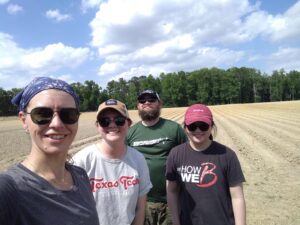Our research goal is to advance basic and applied science of plant-parasitic nematode epidemiology, and address key knowledge gaps in the biology, epidemiology, and management of nematode pathogens. Our research is conducted in the laboratory, greenhouse, and field, and includes work on root-knot nematodes (Meloidogyne spp., including M. enterolobii), lesion nematode (Pratylenchus spp.), sting nematode (Belonolaimus longicaudatus), and stunt nematode (Tylenchorhynchus spp.). Our lab also collaborates with other researcher programs in the Departments of Entomology and Plant Pathology, Horticulture, Crop and Soil Science at N.C. State University, as well as nematology programs throughout the Southeastern United States. We strive to become better scientists and nematologists, while also having some fun and enjoying our work!
Our lab participates in USDA Specialty Crop Research Initiative projects.
Focused INvestigations on the Distribution and management of Meloidogyne enterolobii
USDA SCRI – SweetARMOR Project
Sweetpotato Advanced Resistance and Management for RKN
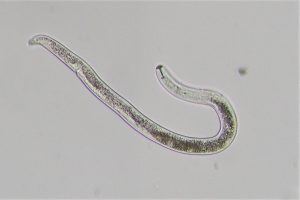 | Management of Plant-Parasitic Nematodes Management of plant-parasitic nematodes can frequently be challenging due to limited options for control, compounded by their “hidden” nature in the soil. Our objective is to explore economically and environmentally sustainable management solutions, including innovative cultural and chemical control options for use in field and vegetable cropping systems in North Carolina. Further, incorporating several strategies and tactics into a management plan will support more robust and durable control than reliance on a single tactic. With this, we seek to explore novel ways to utilize combined strategies. |
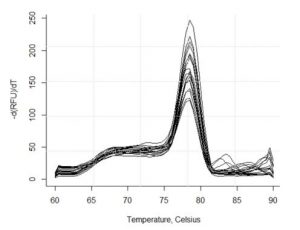 | Molecular Diagnostics of Plant-Parasitic Nematodes Our lab is exploring the use of DNA-based diagnostics for identification and quantification of target plant-parasitic nematodes from soil and plant tissue samples. Our objective is to lay foundational framework and methodologies for DNA-based diagnostics, supporting species-level information on nematode species problematic in North Carolina. An additional objective is to incorporate these data into risk prediction models to support informed nematode management decisions. Within this, we also seek to use these new tools to answer key questions on the distribution and population dynamics of our target species of interest. |
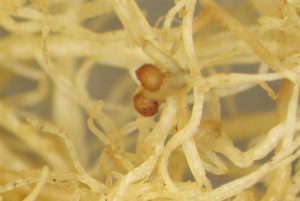 | Investigating Meloidogyne enterolobii and other Emerging Nematodes Meloidogyne enterolobii (also known as the Guava root-knot nematode) has emerged as an important nematode pathogen in North Carolina, and has caused significant losses in several crops. In order to provide better management recommendations for M. enterolobii, it is important to know more about the pathogen itself. Our objective is to gain key insights into the life cycle, host preferences, and survival strategies of this species, and use the findings to direct best management options. |
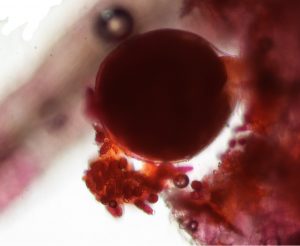 | Management Decisions, Predicting Risk of Crop Damage, and Calculating Action Thresholds The quantity of crop loss or damage due to plant-parasitic nematodes is frequently inversely proportional to plant-parasitic nematode populations, that is, higher population densities have a greater risk of resulting in increased crop loss and damage. An action threshold is a metric against which nematode population densities may be compared, and that may be used to assist in determining when it is advisable to undertake certain management operations, such as a fumigant or nematicide application. Our objective is to calculate action and economic thresholds for target nematode species, and re-evaluate currently used thresholds. In addition, we seek to better understand how environmental and edaphic factors influence plant-parasitic nematode populations and action thresholds, and incorporate this information into crop loss risk predictions. |
Research Publications
